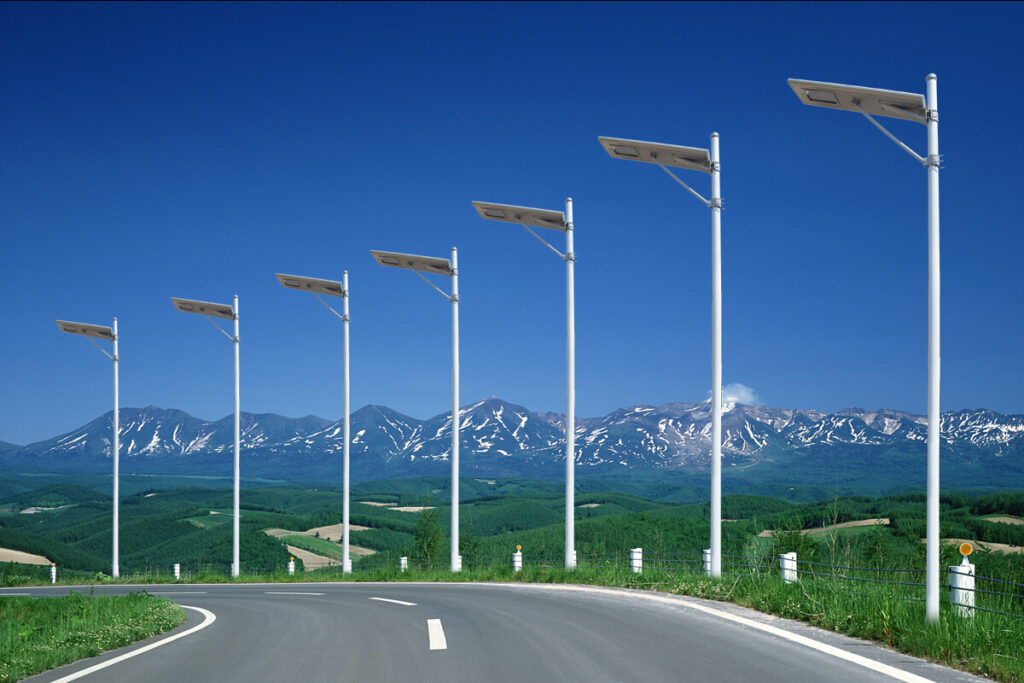
Solar street lights are raised light sources which are powered by solar panels generally mounted on the lighting structure or integrated into the pole itself. The solar panels charge a rechargeable battery, which powers a fluorescent or LED lamp during the night.
Most solar lights turn on and turn off automatically by sensing outdoor light using solar panel voltage. Solar streetlights are designed to work throughout the night. Many can stay lit for more than one night if the sun is not in the sky for an extended period of time. Older models included lamps that were not fluorescent or LED. Solar lights installed in windy regions are generally equipped with flat panels to better cope with the winds.
The solar panel is one of the most important parts of a solar street light, as the solar panel can convert solar energy into electricity that the lamps can use. There are two types of solar panels commonly used in solar street lights: monocrystalline and polycrystalline. The conversion rate of mono-crystalline solar panels is much higher than their poly-crystalline counterparts. Solar panels also vary in wattage systems.
